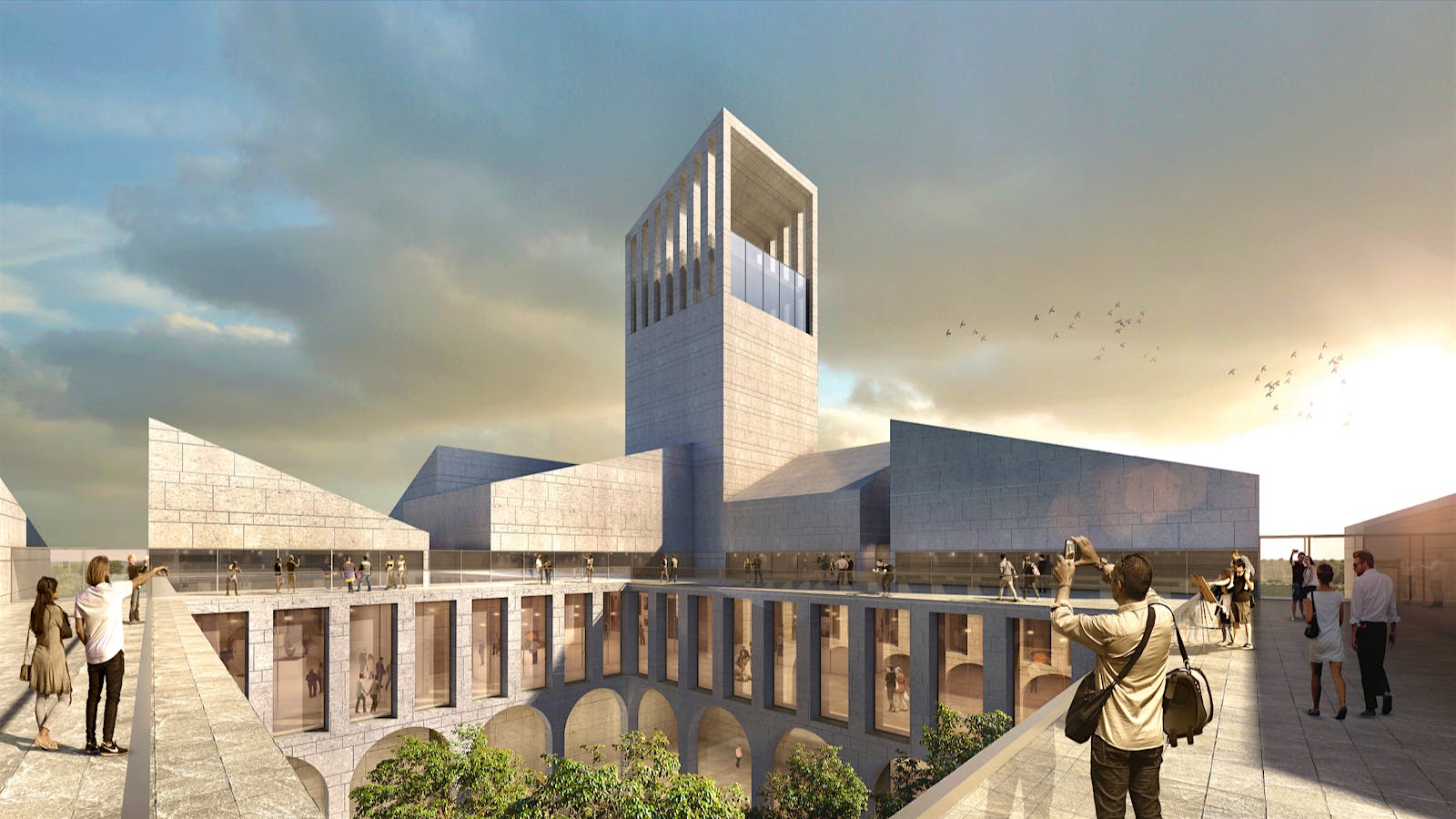The Bordeaux Wine Museum announces its expansion in Beijing

[ad_1]
Bordeaux Wine Museum Cité du Vin is teaming up with the city of Beijing to build a 194,000 square foot wine museum in China. The new museum, inspired by the Cité du Vin, will be located 40 kilometers southwest of the city center of the Chinese capital and is expected to open in 2021. The planned construction cost is $ 66.5 million.
“Wine is part of our world heritage,” said Sylvie Cazes, president of the Foundation for Wine Cultures and Civilizations, which manages the Bordeaux museum. “Our mission is to share this great story with Chinese visitors.”
The contemporary design of the new museum echoes a Cubist interpretation of the Saint-Emilion skyline and will be located in the heart of Zhong Pu Hui wine village, a development in Beijing’s Fangshan district. This region is already rich in culture, home to Shidu Natural Park, Yunju Temple and the site where the “Peking Man” homo erectus fossils have been discovered.
Weixang Tang, 62, a Chinese businessman who made his fortune through duty-free shopping on board, led the effort to build the museum. President and founder of Zhong Pu Hui wine village, Tang was awarded the Chevalier de la Légion d’Honneur in 2015 for his long-standing commitment to French culture. “China and France share a special affection for gastronomy and the friendliness that goes with it,” Tang said. He believes that the cultural and gastronomic richness of wine attracts Chinese consumers looking for new experiences and knowledge.
The village currently includes several hectares of vines. Tang has a building permit for 3 square miles of development, including two hotels, lodges, a farm, restaurants, bars and shops, as well as a free trade zone for Chinese and foreign companies engaged in the wine, organic farming and, more generally, energy transition. There will also be a startup hub for entrepreneurs.
Tang started the museum project, but the Chinese government supported the project and is now the sole funder. The 72,000 square foot permanent exhibit, an immersive experience, will build on what the team learned in Bordeaux, but with additions specifically designed for Chinese visitors. Guests can visit five areas: What is wine ?, Wine in the world, History and civilization of wine, Wine and the senses and Lifestyle and wine, which includes information on how to buy and drink wine, all complemented by a quiz and tasting. .
“I think this project is great because it was promoted by someone with whom we have a great relationship and who has a real dual culture. He has one foot in China and one foot in Paris,” said Cazes.
Stay on top of important wine stories with free Wine Spectator’s Last minute alerts.
Tang’s ties to French culture go back to his childhood during the Cultural Revolution. Her family was separated and banished to the countryside for work. Tang’s mother wanted him to study and found a French teacher. Years later, he spent a year studying French at the Sorbonne in Paris.
Tang’s appreciation for French wine inspired him two decades ago to plant the first vineyard in Fangshan. Today, Château Bolongbao, with 173 hectares of vines at the foot of the Wulanshan mountains, produces 11,700 cases per year, mainly Cabernet Sauvignon-Merlot blends. Since Tang’s pioneering investment, more than 30 neighboring vineyards have grown. And the area is connected to downtown Beijing by metro, train, and highways, an easy commute for tourists and entrepreneurs.
“We are at the start of a very long history. In my opinion, wine in China will be very important,” said Jean-Marc Menant, general manager of the wine village.
[ad_2]
Source link


